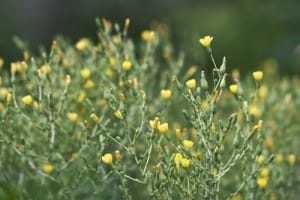Rodale’s Organic Life
by Doug Hall
 |
Plan to plant more tomatoes, basil, onions in the spring by saving this free resource right now.
Saving and storing seeds from your own vegetable and herb crops is a thrifty way to perpetuate your favorite varieties from year to year. Open-pollinated varieties, including heirlooms, are the best candidates for seedsaving. Unlike hybrids, their genetic traits are more likely to remain stable from generation to generation—although, if you’re saving seeds to be used for growing microgreens or sprouts, genetic stability is less important.
Some crop species tend to pollinate themselves (selfers), while others rely on insects or wind to deliver pollen from nearby flowers (outcrossers). Peas, lettuce, and tomatoes are selfers and are unlikely to cross-pollinate, even if several different varieties are growing in the same garden. For outcrossers, such as squashes, brassicas, and onions, genetic purity can be ensured only by growing a single variety of that crop in isolation from others or by excluding stray pollen with a greenhouse or other enclosure. Isolation cages are used by commercial growers but aren’t practical for the average home gardener.
Seek out the healthiest, most productive plants for seed production, and look for traits that are worth preserving. With crops for which early bolting or flowering is not desirable, such as lettuce and basil, save seeds from the specimens that are slowest to flower.
Once you’ve gathered seeds, be sure they are thoroughly dry before packaging them in envelopes or jars. Label the packages with variety name and the date you collected the seeds, and store them in a cool, dry place to maintain their freshness.
Beans
Usually self-pollinates unless growing side-by-side with another bean variety; isolate varieties by 10 to 20 feet. Leave pods on the plants to dry completely. In wet weather, it may be necessary to harvest mature pods and dry them indoors. Once pods are dry and brittle, break them open by hand. Pea seeds can be saved using the same technique.
Basil
Cross-pollinated by bees; isolate varieties by 150 feet or more. Let theseed heads dry on the plant. Shake or crumble the seed heads to release the seeds, and blow away the chaff
Lettuce
Usually self-pollinates but occasionally is cross-pollinated by insects; isolate varieties by 10 to 20 feet. Allow a bolted lettuce plant to flower. Flower-ing and seed ripening within a single seed head continues for 3 or 4 weeks, so the seeds can’t be harvested all at once. Collect them by shaking the top of a seed head into a paper bag or over a sheet spread on the ground; repeat every few days. Or cut a seed head midway through the ripening process and bring it indoors to dry for a week, then rub it between your hands to release the seeds. Separate seeds from chaff by blowing on them gently.
Leeks + Onions
Cross-pollinated by insects; isolate varieties by 1 mile (although leeks and onions don’t have to be isolated from each other). Onions and leeks are biennials, so they flower and set seed in their second growing season. Leeks, which are winter-hardy in all but the coldest zones, can be left in the garden and mulched well through the winter to flower the following spring. Onions are less hardy; select the best bulbs to overwinter in storage, then replant them in spring. Let the seed heads mature and dry on the plant. When the black seeds begin to show, harvest the seed heads and allow them to continue drying indoors. Most of the seeds can be shaken loose; to release the rest, rub the dried seed heads between your hands.
Squash + Pumpkins
Cross-pollinated by bees and other insects; isolate varieties by 1/4 mile. For summer squash, leave fruits to be harvested for seed on the plant until they are overripe, with hard, yellowish rinds. For pumpkins or winter squash, harvest mature fruits and store them for at least a month so the seeds can fully ripen before they are collected. Cut open the fruit and scrape out the pulp with a spoon. Separate the seeds from the pulp as much as possible and leave the seeds to dry for 2 or 3 weeks on a paper towel.
Radishes
Cross-pollinated by insects; isolate varieties by 1/2 mile. A single plant cannot pollinate itself, so let several adjacent radish plants flower and produce seeds. Leave the seed pods on the plants until they are brown and dry. Break open the pods and shake out the seeds.
Peppers
Usually self-pollinates but occasionally is cross-pollinated by insects; isolate varieties by 500 feet or more. Cut open a fully mature pepper and scrape the seeds onto a paper towel or coffee filter to dry. Wear gloves to work with hot peppers. The seeds should be tan, beige, or yellowish; if they’re bright white, they aren’t mature. Dry seeds for 2 or 3 weeks indoors before packaging and storing them.
Tomatoes
Usually self-pollinates. Tomato seeds must be fermented to remove their gelatinous coating, and then dried.
The post How To Keep Your Favorite Seeds + Grow Them Again appeared first on Cornucopia Institute.
